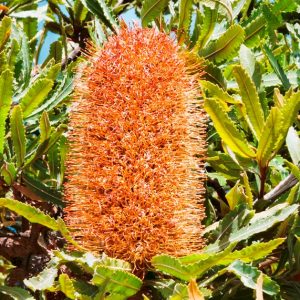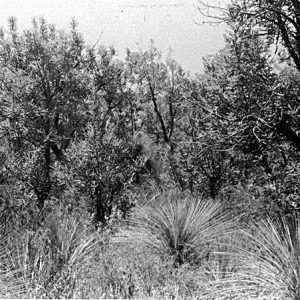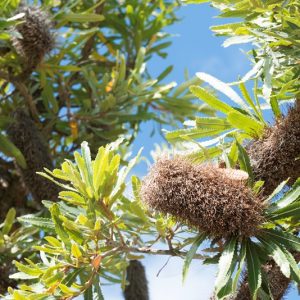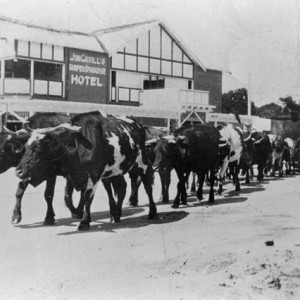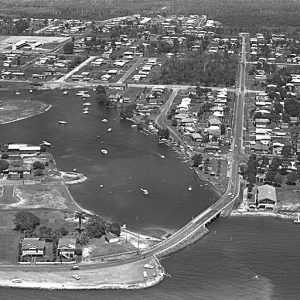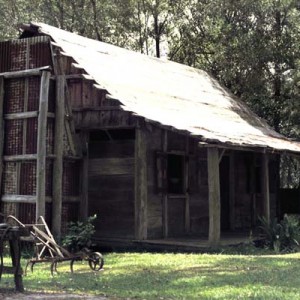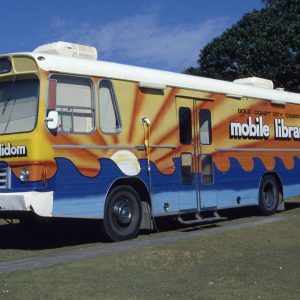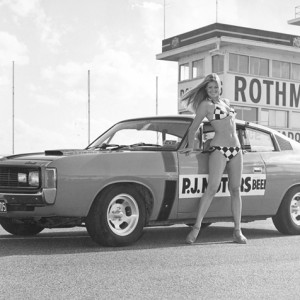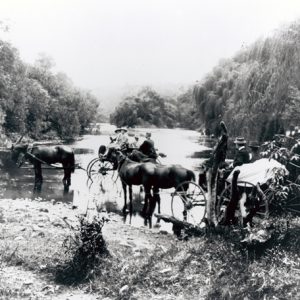
As a flowering tree, the Wallum Banksia (Banksia aemula) serves as both the floral and arboreal emblem for the City of Gold Coast. It is a small bushy tree that survives in sandy soils and was one of the first banksias to be successfully grown in England after being introduced there in 1788. The flower buds change colour from green to pale yellow and the old brown flowers and seed pods remain on the branch following flowering. The old flowers and seed pods of the Wallum Banksia influenced the design of May Gibb’s Big Bad Banksia Men.
In the early 1990s Council received a number of enquiries asking what the floral or arboreal emblem for the Gold Coast was. The City did not have one and, following discussions with staff from the Parks and Gardens department, it was decided that the Wallum Banksia, with its unique flower and seed pod, would be an ideal candidate.
It was formally recommended as the floral and arboreal emblem of the Gold Coast by the Supervising Landscape Draftsman and the matter was raised at the Maintenance and Construction Committee Meeting on 27 February 1991. It was officially adopted by Council on the 8 March 1991. As the Wallum Banksia occurs in the coastal regions of South East Queensland and Northern New South Wales, it was considered an appropriate choice to reflect the region’s coastal character.
In addition to being the floral and arboreal emblem of the Gold Coast, in 1998, the Wallum Banksia was also incorporated into the City’s coat of arms, replacing a pelican. It is also the emblem of the Gold Coast Regional Botanic Gardens.
Due to development, the Wallum Banksia is relatively rare in the wild on the Gold Coast. Remnants can be found at the Pine Ridge Conservation Park in Runaway Bay, Len and Muriel Godlonton Reserve in Runaway Bay and Pizzey Park in Miami. The Wallum Banksia has been re-introduced in parts of the city, including at the Jebbribillum Bora in Burleigh Heads.
- Flower of the Wallum Banksia, 2015. Photographer Narelle Power
- Wallum Banksia, Pine Ridge Reserve, circa 1970s. Photographer unknown
- Older flowers of the Wallum Banksia, 2015. Photographer Narelle Power
Sources of information and further reading
- Native vegetation groups (Wallum or heathlands) http://www.goldcoast.qld.gov.au/environment/vegetation-types-4077.html
- Council Meeting CM08/03/91(MC008) 8 March 1991
- McDonald, Graham J., Nature Conservation Strategy for Len and Muriel Godlonton Reserve, corner Morala Aveune and Broadwater Street, Runaway Bay, 2000
- Australian National Herbarium http://www.anbg.gov.au/gnp/interns-2006/banksia-aemula.html
- Friends of Gold Coast Regional Botanic Gardens Inc, Growing Matters, Autumn 2016, Volume 18 Issue 1 http://www.friendsgcrbg.org.au/wp-content/uploads/2013/11/Growing-Matters-Autumn-2016-web-version.pdf
- http://www.broadwatershores.com.au/blog/stroll-down-pine-ridge-conservation-park/31
- http://www.goldcoast.qld.gov.au/guided-walk-of-pine-ridge-reserve-27062.html
